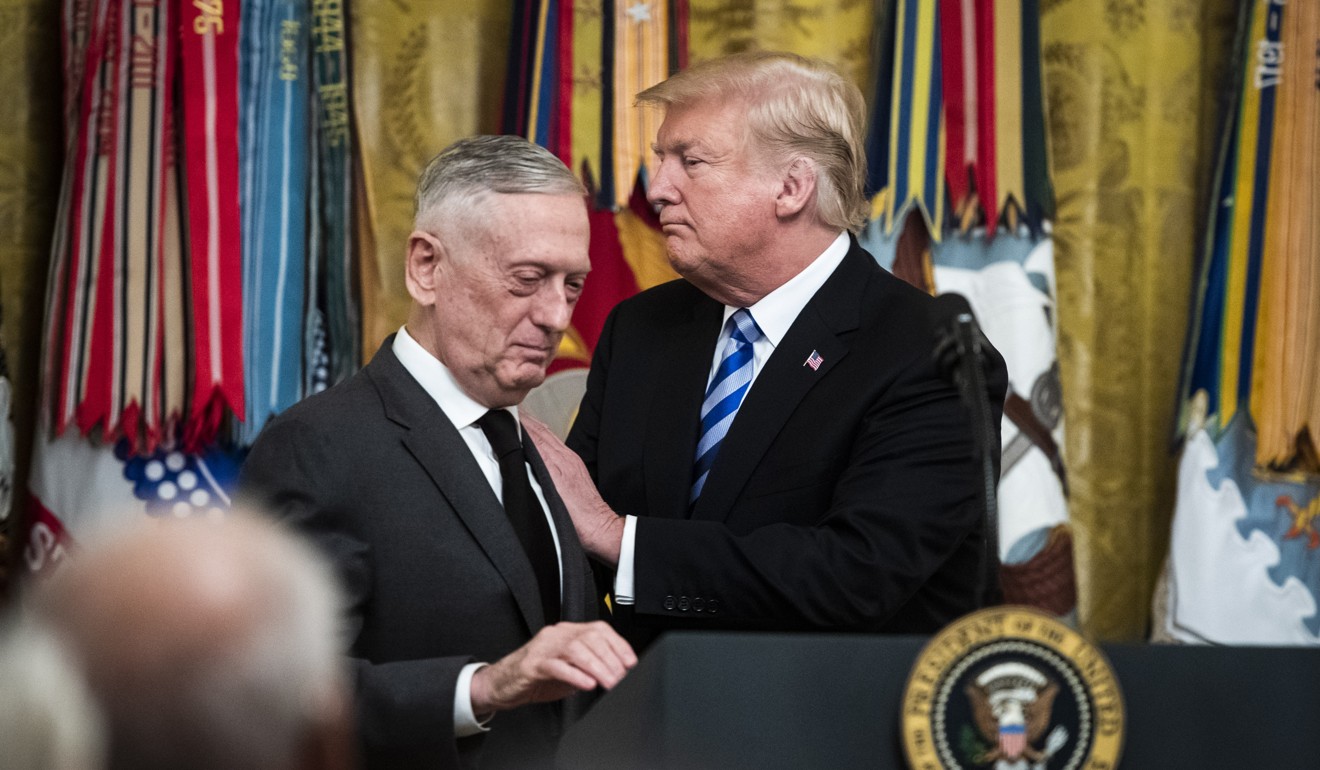Mark J. Valencia
 The South China Sea is one of the world’s major flashpoints. But it takes two to tango – or tangle. So it is critical for regional stability that the United States gets its South China Sea policy right. Although former US defence secretary James Mattis was tough on China, he was seen by many as reliable and measured. He was not unnecessarily confrontational, unlike more bellicose voices in and outside the administration.
The South China Sea is one of the world’s major flashpoints. But it takes two to tango – or tangle. So it is critical for regional stability that the United States gets its South China Sea policy right. Although former US defence secretary James Mattis was tough on China, he was seen by many as reliable and measured. He was not unnecessarily confrontational, unlike more bellicose voices in and outside the administration.
Amid the deterioration of overall US-China relations, he provided some stability in military-to-military relations. Now pundits are pondering the implications of his abrupt departure. The views and style of his eventual successor will be a crucial factor in US-China military relations. With regard to the South China Sea, the US’ strategic and political interests remain more or less the same, but may present problems requiring policy decisions.
The US-China tensions in the South China Sea spring from a deeper contest over the future of the Asian regional order and the two countries’ roles in it. To put it simply, the US wants to remain the leading strategic power in Asia, and China wants to replace it.
President Xi Jinping has declared: “No one is in a position to dictate to the Chinese people what should or should not be done.” With its burgeoning wealth and power, China is unlikely to be intimidated and begin to act more cautiously in the region.
Indeed, it is more likely to meet threats and provocative actions with its own. Nationalists in the government, in the Chinese navy, and among netizens might push for responses to provocations. More military-to-military incidents are likely, and past international episodes might seem minor by comparison.
The next defence secretary’s decision-making will also be influenced by US President Donald Trump’s isolationist “America first” approach, including his scepticism of alliances that Mattis supported.
Trump seems wary of expending more American blood and money on defending allies like Japan, the Philippines and Taiwan, especially if they provoke China but expect the US to back them up.
This could hamper any appointee’s ability to flex military muscles in Asia. Moreover, with Trump’s sudden, unilateral withdrawal of US troops from Syria, friends and allies in Southeast Asia may realise that they, too, are probably on their own and that they should act accordingly.

Mattis’ approach to China was in keeping with the US’ new National Security Strategy, which singled out China as a “revisionist” nation and competitor, and warned: “A geopolitical competition between free and repressive visions of world order is taking place in the Indo-Pacific region.”
Under Mattis, the US stepped up the frequency of its provocative “freedom of navigation operations”, challenging China’s territorial claims.
To show US support for Taiwan, he approved three transits by US warships through the sensitive Taiwan Strait in a year. He angered China by approving new arms sales to Taiwan.
Moreover, he allowed the US military to amply demonstrate the policy that the US would “fly, sail and operate” wherever international law allowed. Under Mattis, there were more frequent flyovers by nuclear-capable B-52 bombers around the South China Sea.
He excoriated China for coercing and intimidating rival claimants in the region. Concerned about China’s militarisation of the disputed islands, the US also withdrew an invitation to China to attend the world’s largest naval exercise, Rimpac, last year.
However, early in his tenure, Mattis did try to assure China by saying: “At this time, we do not see any need for dramatic military moves at all.”
Later, he stated that the US is “not out to contain China”. He said the two countries would sometimes “step on each other’s toes” and needed to find ways to manage their relationship.
Some say there has already been an incremental shift towards a more aggressive US military posture in the South China Sea that would be consistent with National Security Adviser John Bolton’s penchant for taking greater risks than recent predecessors.
He appears to have consolidated control over security matters, while Trump is clearly distracted. Whether the new defence secretary will have the clout and connections to counterbalance bad decisions by Trump or Bolton on South China Sea issues is an open question.
Some of the issues include: what will the US do if – or, more probably, when – a Chinese warship again blocks a US warship challenging China’s claims? In the previous incident involving the Decatur, Mattis chose not to escalate the issue.
Will the US clarify its interpretation of its obligation to support the Philippines if it is attacked in the Spratlys? If it does so in the positive – as the Philippines is demanding and bellicose US pundits are recommending – the Philippines could, with intent or through miscalculation, draw the US into a military conflict with China.
Also, will the US continue to recruit and encourage other powers – like Britain, France and Japan – to either join its freedom of navigation patrols or undertake their own?
In December, the Pentagon’s top Asia official urged Australia and other allies to boost their military presence in the South China Sea.
And will the US continue or step up intelligence, surveillance and reconnaissance missions despite China’s increasingly shrill protests?
Hopefully, whoever is nominated and confirmed as the next US secretary of defence will understand – as Mattis apparently did – that overreaction can produce war just as easily as policy failure.
More importantly, he or she should understand that though the purpose of a nation’s military forces in the past was to win wars, it must now be to prevent them. This is especially true when nuclear powers are involved.
No comments:
Post a Comment